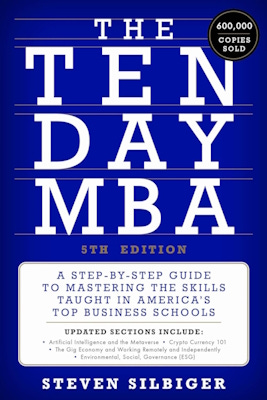“Ego is the enemy,” says modern Stoic philosopher Ryan Holiday — and that has never been more true than when it comes to assuming what consumers will do. Today’s newsletter contains several surprising stories about unexpected marketing results that emphasize this point.
Old Gold🪙
Thomas McKinlay from Ariyh has another fun finding this week:
When you use numbers in your copy (e.g. ads, website, packaging), write them as digits (e.g. 4, 10%) instead of words (e.g. four, ten percent).
You will get better ad results and people will be more interested in buying.
How much more likely? Researchers publishing in the Journal of Consumer Research found that:
A Facebook ad campaign raising awareness about skin cancer had 93.1% higher CTRs when the ad used numbers (1 out of 5 Americans) versus words (One out of Five Americans)
People were 9.5% more likely to find reviews helpful when the review summary used digits (5 stars!) versus words (Five Stars!)
People were 28.7% more likely to purchase an energy bar from a company with a negative reputation when it was advertised as having 10 (vs. ten) grams of protein.
McKinlay goes so far as to suggest that even a basic ad like this one leaves money on the table:
It seems unbelievable that a simple change from “one” to “1” could boost sales, right? Well, let me tell you a story…
Way back in 2003, we were having trouble deciding between two names for a women’s hair remover. Most of the team liked “Vanishing Touch,” but a few people really liked “Finishing Touch.” As a burgeoning marketing scientist, I proposed an A/B split to find out which name consumers liked best. We created two identical versions of the TV commercial, except for the name, and aired both of them. I even worked with our lovely and talented account manager1 to ensure we controlled our media for “SRS” — station (same networks), rotation (same time slots) and spending.
The result? “Finishing Touch” outperformed “Vanishing Touch” by 2 to 1. And the rest, as they say, is history. That’s right, a single word doubled sales (or halved sales, if you’re a ‘glass half empty’ type).
Was it just a weird fluke? Well, let me tell you another story…
In 2008, we decided to try a new producer for another hair-removal product we liked, this one called “Smooth Away.” However, this particular guy did not have a lot of experience in our type of advertising, so he created a commercial with a very short “end tag.”2 When the results of our TV test came back, the project looked like it might be a dud. However, I was adamant that the end tag had mattered. I persuaded the CEO to let me run another test in an A/B split to find out.
In this case, I had the editor cut a few things out of the commercial near the end of the spot to leave room for a longer end tag. We then ran the head-to-head test, controlling for all the variables mentioned before. Cut to the chase: Response improved by 49%. Same name, same messaging, same offer — just a few seconds more time made all the difference.
I could go on. Every few years in my career, I’ve come across some seemingly minor marketing change that has an outsized impact on consumer behavior. That’s why I’m not surprised that “number format effect” (the official name for what was described above) is a thing. In fact, I’d wager there are at least a few dozen more of these gems just waiting to be discovered (and named).
What does this mean for you? It can only mean one thing: Test, test, test. It’s a DR aphorism for a reason! Ego is your enemy. You don’t always know what will matter to consumers. Only testing will tell. So, if you have a theory or even just a strong hunch, design some kind of experiment to test it.3
You may just find you’re on to something!
Book Nook📚
Now available in a newly updated fifth edition, the The Ten Day MBA has been a bestseller since it was first published in the 1990s. Whether you learned business on the job (like me) or have a fancy degree from a top business school, you’ll love Steve Silbiger’s ultimate crash course/refresher. It’s concise, easy to read and includes everything an Ivy-League MBA would want to know.
I have an undergraduate degree in journalism and never studied business or marketing. To hold my own in the early years, I had to read a lot of books and articles to catch up. If only I had Steve’s book back then! When I finally picked it up, I quickly updated and perfected my business knowledge. It now sits in my library as a handy reference.
Oh, and yes — that Steve Silbiger. Before he was a direct marketing master and founder of Top Dog Direct, Steve earned one of those fancy degrees I mentioned above. He graduated from the Darden School of Business at the University of Virginia, which actually beat Harvard this year in one of those ‘best business schools’ rankings.
Here’s what Steve has to say about the book:
After I earned my MBA, I went about boiling down my binders of notes into a ‘Sparks Notes’ of a top-ten MBA education. I also consulted my friends that attended other top 10 programs to make sure I wasn't missing anything. I have updated it four times with the help of star students recommended by the faculty and my own continuing research. Definitely not academic, I write for the impatient student in mind, but it delivers easy to digest MBA content.
Get your copy today!
Chart Watch👁️
2024 Historic Victory Coins
This is really a ‘chart preview,’ but it’s just a matter of time. ‘Tis the season. (We’ve already had Trumpy Trout.)
I’m sure we’ll see more commemorative coins and plates to go along with this set — especially if Harris wins.
BTW - The links above will only work if you have access to The Library of DRTV, my online archive of DRTV projects going back to 2007. Want in? Simply upgrade to paid using the button below. It’s just $5.99 per month or $59 for the year, an 18% savings!) I’ll also send you a surprise gift easily worth more than the cost of a subscription when you upgrade.😉
Fun Facts🧠
In a 2012 Stanford experiment, a pitch for hiking boots that mentioned a minor downside of the product outperformed a pitch that was all positive by 20%. This study confirmed a marketing truism and our fun fact of the week:
Pointing out imperfections makes a product more appealing to consumers.
This is called the “blemishing effect,” according to the latest edition of the Psychology of Marketing. As an example, the newsletter cites an ad for Buckley’s cough syrup that used the tag-line: “It tastes awful. And it works.”
Students of advertising history will recall that it was Listerine mouthwash that first used this approach in its advertisements from the 1970s. Their slogan: “The taste people hate. Twice a day.” Here’s an ad featuring the slogan from the year of my birth. It stars Academy Award-winning actor F. Murray Abraham (Amadeus).
As an interesting side note, Laura Ries4 has explained how Listerine’s chief competitor countered this smart marketing move:
Listerine…took a strong negative (bad taste) and used it to its advantage by proudly touting how the bad taste was killing the germs.
Except for Scope, all the competition copied Listerine with their own bad-tasting mouthwash brands. Scope attacked Listerine on taste. Scope, the good tasting mouthwash, said people who used Listerine had medicine breath.
That’s some high-level marketing jiujitsu right there!
She was so lovely and talented, in fact, that I married her. Aren’t A/B splits romantic?
For those who don’t know, an “end tag” is that distraction-free time at the end of a DRTV commercial for prospects to write down the 800 number or Web address.
A caveat: Make sure it’s a well-designed test. As mentioned, I always work hard to control every variable I can. I’ve seen too many marketers get misled by poorly designed tests.





